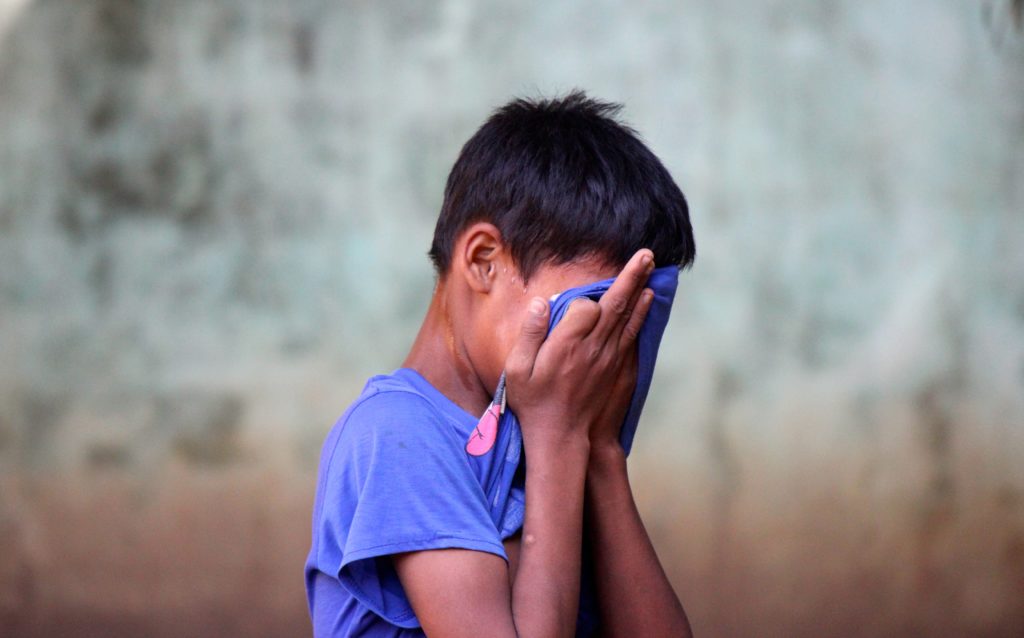A new movement is growing across the world to bring awareness to the concerning rate of child trafficking. Activists are using the movement to also highlight other forms of abuse children are subject to, and the long-term consequences it can have on a child’s life.
The #SaveOurChildren and #SaveTheChildren movement was created in honour of World Human Trafficking Day, reports Rolling Stone.
According to the United Nations (UN), women and girls are the main targets of human trafficking. Women make up 49% and girls 23% of all victims of trafficking. Sexual exploitation is the most common form of exploitation (59% share) followed by forced labour (34% share).
The UN also reports that COVID-19 has amplified trafficking dangers. “Loss of jobs, growing poverty, school closures and a rise in online interactions are increasing vulnerabilities and opening up opportunities for organized crime groups,” they write in a newsletter.
South Africa is a source, transit and destination country for victims of trafficking, and has become a prime spot for international syndicates to operate.
According to the South African National Human Trafficking Hotline, current stats show that only 1% of victims are ever rescued.
As the Save our Children movement gains momentum across the world, it is important to be conscious of all the ways children can be abused.
There are five main forms of child abuse: Physical, sexual (which includes rape, molestation and child pornography), neglect (physical neglect, educational neglect, emotional neglect), emotional abuse (verbal, mental, or psychological) and exploitation (trafficking, child labour and online abuse).
Child abuse can happen anywhere and child abusers come from all walks of life. They can be anyone from parents, close family members, to teachers, coaches and family friends. It could be anyone who has access to a child and is in a position to mistreat them.
Often, people who abuse children were themselves abused as kids. This cycle of abuse can be hard to break if not dealt with appropriately and can pass down for generations within a family.
Problems most commonly associated with the occurrence of child abuse and neglect are domestic violence, alcohol and drug abuse, parental mental health issues, poverty and young people that are disconnected from their families. Very often, children are abused within the family, by a caregiver or someone they know.
Because abuse can come in many forms, there are so many different signs a child is being harmed. The Western Cape Government advises people to look out for the following signs:
Physical signs:
– Any injury (bruise, burn, fracture, abdominal or head injury) that cannot be explained
– Failure to gain weight or sudden dramatic weight gain
– Headaches or stomach aches with no medical cause
– Genital pain or bleeding
– Abdominal pain, bed-wetting (especially if the child has already been toilet trained)
– A sexually transmitted disease
Other signs that should raise concern:
– Trouble sleeping (nightmares; sleeping too much)
– Extreme sexual behaviour that seems inappropriate for the child’s age
– Trouble with school (poor grades, poor attention, not wanting to go to school)
– Eating disorders
– Self-mutilating behaviour and suicidal, withdrawn or violent behaviour
– Substance abuse
– Attempts to run away, refusing discipline or abusing others
– Post-traumatic stress symptoms
Signs of emotional abuse
– Apathy and depression
– Hostility or stress
– Lack of concentration
– Eating disorders
– Headaches, nausea, abdominal pains
– Suicide attempts
Signs of sexual abuse
– Inappropriate interest or knowledge of sexual acts or knowledge of sexual terminology for child’s age
– Nightmares and bed wetting
– Drastic changes in appetite
– Over compliance or excessive aggression
– Fear of a particular person or family member
– Depression and suicide attempts
– Self-mutilating behaviour (self-inflicted cuts, sores and/or burns)
Signs of neglect
– Unsuitable clothing for weather
– Dirty or unbathed
– Extreme hunger
– Apparent lack of supervision or abandonment
– Insufficient safety precautions in the home
– Unattended medical, dental or educational needs
Signs of exploitation
– All forms of slavery or practices similar to slavery, including debt bondage or forced marriage
– Sexual exploitation
– Servitude
– Forced labour or services
– Removal of organs
While physical wounds may heal, there are many long-term consequences of experiencing the trauma of abuse. It can impact on a child’s brain development and lead to psychological issues, psychiatric disorders and behavioural issues. Abused children may also have poor physical health, relationship issues and struggle with maintaining healthy relationships. It could also lead some into a life of crime and substance abuse.
If you know or suspect a child is being abused, please contact one of these resources:
– Childline South Africa (24-hour free helpline 0800 055 555)
– Department of Social Development (toll free number 0800 220 250)
– Childline Wynberg (Tel: 021 762 8198 or Email: info@childlinewc.org)
– Childline Mitchells Plain (Tel: 021 376 0000 or Email: candice@childlinewc.org.za)
– Childline Tygerberg (Tel: 021 930 0859 or Email: leonie@childlinewc.org)
– SA Trafficking Hotline:0800 222 777 or email info@0800222777.org.za
– South African Police Service (SAPS): Crime Stop number 08600 10111 or SAPS 10111
– Child Welfare South Africa (0861 424 453
– GBV Command Centre: 0800 428 428 or *120*7867#
Picture: Unsplash

